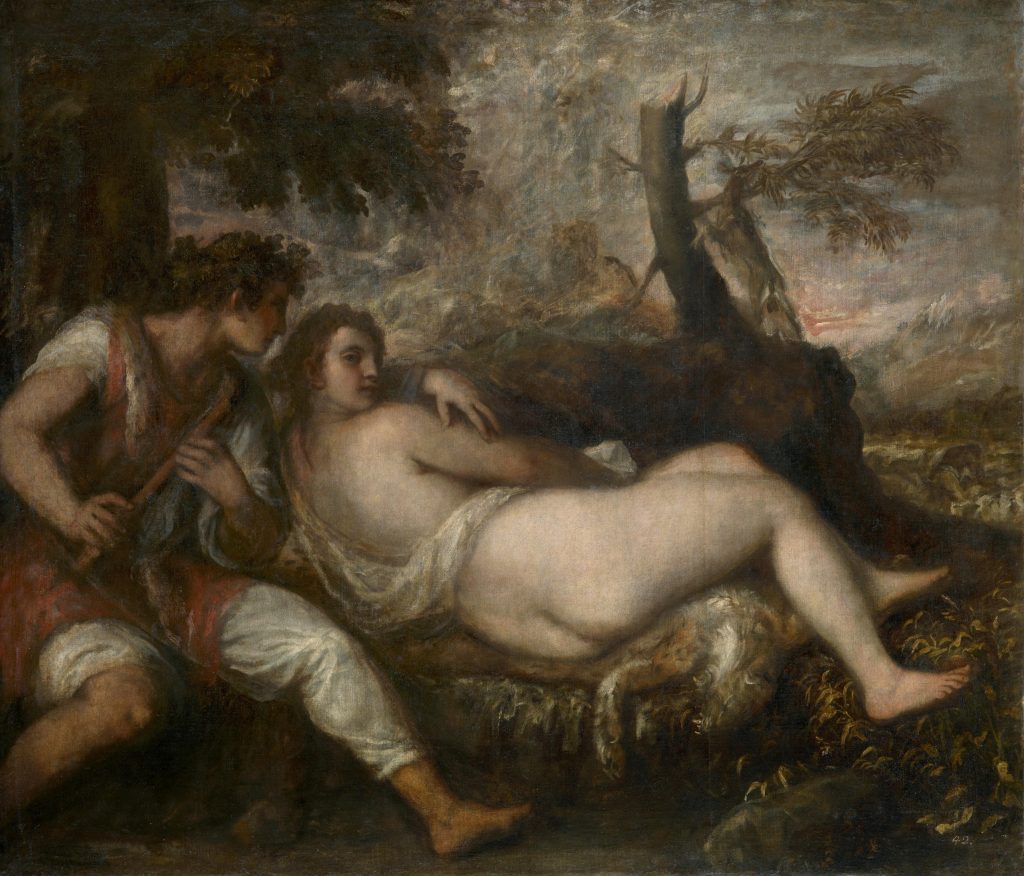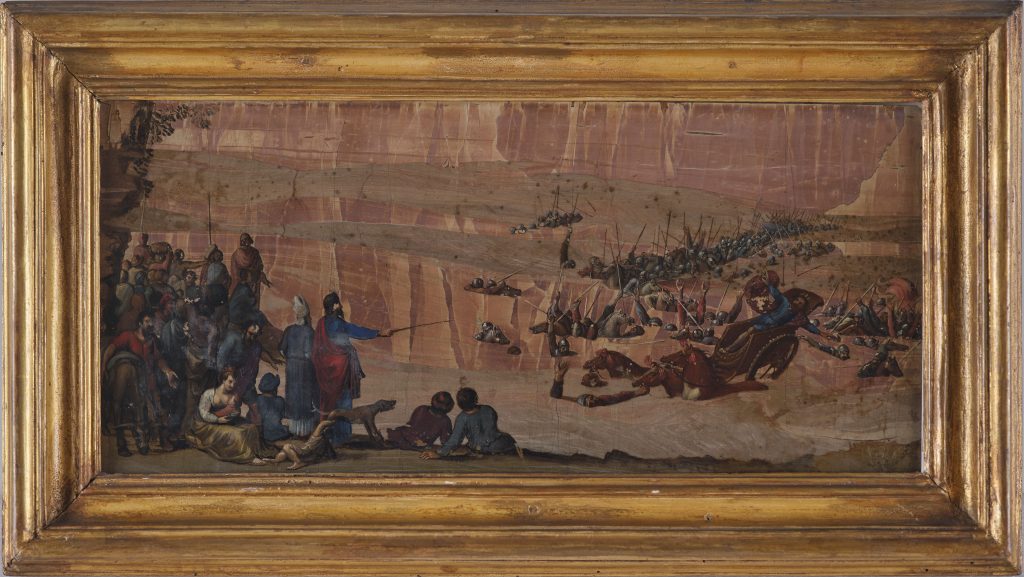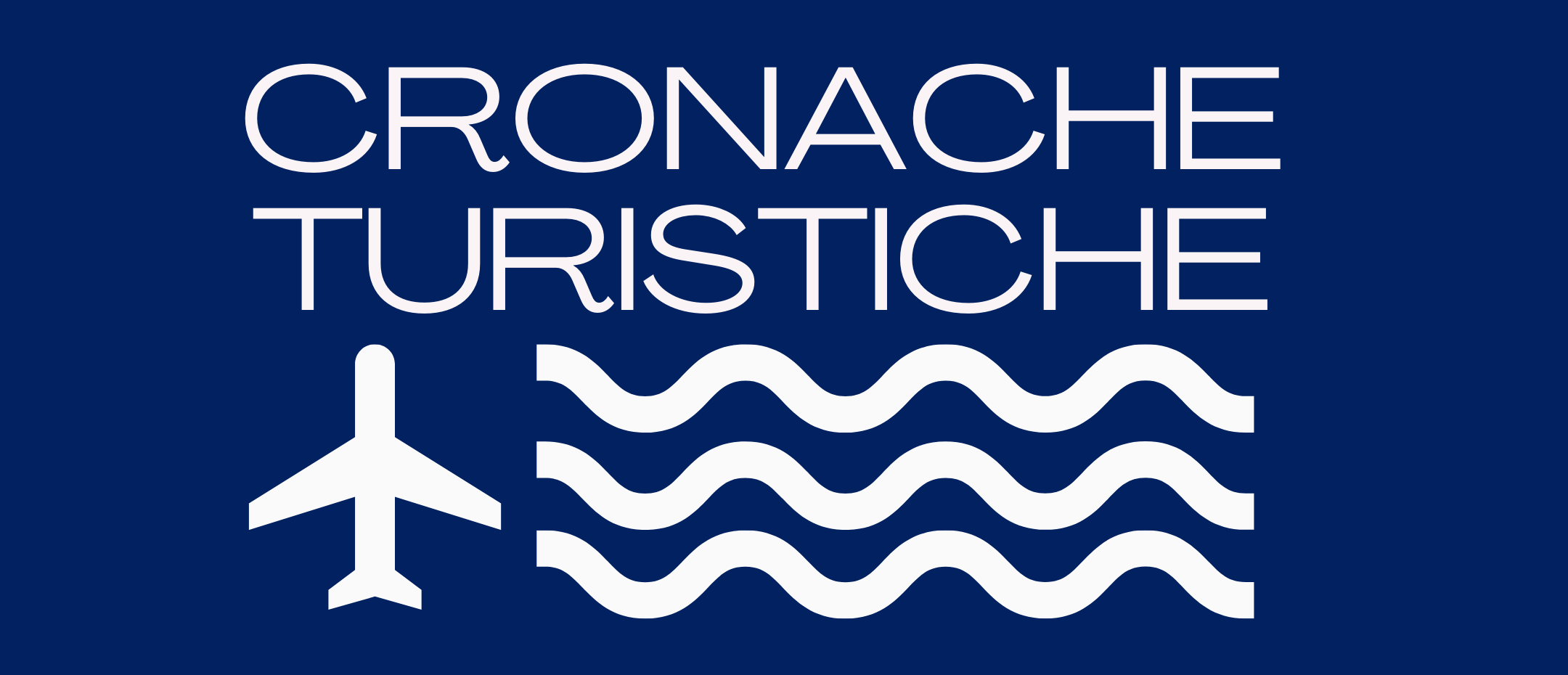
The programme includes three main events and several other interesting initiatives.
“Next year’s programme focuses on the relationship between art and landscape, which is fundamental for understanding the current, as well as the historical, sense of a project like that of the baroque Villa, of which the Galleria Borghese constitutes a splendid and still comprehensible example”, says the Director of the Galleria Borghese, Francesca Cappelletti. “Our visitors will be led to reflect on the cultural nature of the landscape and the extent to which the surrounding environment and the materials of nature have been the inspiration and subject of artists’ activity.”
From 9 February to 22 May will take place The Guido Reni and Rome: Nature and Devotion exhibition curated by Francesca Cappelletti. It revolves around Reni’s painting Country Dance, which for a year has been back in the museum’s collection, to which it had always belonged before its sale at the end of the 19th century.
The return of the work next to the other landscape paintings of the museum’s collection provides an opportunity to reflect on the relationship between Reni – a painter dearly loved by Scipione Borghese – and rural themes and landscape painting, which until now have been considered extraneous to his production or, in any case, of little relevance.
Focusing on Guido Reni’s interest in landscape painting in relationship to the other Italian and foreign painters present in Rome in the early 17th century, the exhibition will try to reconstruct the first years of the artist’s stay in the city, his passionate study of ancient and Renaissance works, the extremely important relationship he developed with the Genoese banker Ottavio Costa, his astonishment at the highly chiaroscuro painting of Caravaggio – who Reni knew and frequented, as supposed by Carlo Cesare Malvasia in his Felsina pittrice (1678) and confirmed by recently discovered documents – and the beginning of his dazzling career as a great painter of history.

15 June – 18 September 2022 Titian: Dialogues of Nature and Love is an exhibition-dossier, curated by Maria Giovanna Sarti, occasioned by the loan from the Kunsthistorisches Museum of Vienna of Titian’s Nymph with shepherd as part of a programme of cultural exchange between the two institutions.
The encounter between the canvas from Vienna and the Titians in the Galleria Borghese creates an opportunity have the works converse about several themes always present in the painter’s production, a thread leading from the beginning of his activity to his last epigones: Nature, understood as expressive landscape and a place of human action, and Love, rendered in its diverse forms – divine, natural, matrimonial – and personified by Venus or a Nymph; by a very young girl or a bride.
Nature and Love are closely linked and part of the life cycle, in a harmonious relationship, to which the amorous and musical allegory of the Nymph with shepherd alludes. This is the last episode of a theme initiated by the earliest Titian in his Three Ages of Man (Edinburgh), displayed here in its replica from Sassoferrato, which during the 17th century copied – most likely for the Borghese family itself – a version present in Rome of Titian’s painting and is evidence of how much precisely these themes were valued and in demand by the major aristocratic collections in Rome.

In the fall 25 October 2022 – 29 January 2023 Timeless Marvel. Galleria Borghese will dedicate an exhibition to Stone Painting in Rome – its development and its historical and semantic implications during the 17th century – curated by Francesca Cappelletti and Patrizia Cavazzini, as part of a research project begun in 2021 with an extension of the research on nature and landscape in the museum’s collection.
Among the consequences of the Sack of Rome was Sebastiano del Piombo’s invention of stone painting. In effect, despairing because of the loss of many paintings during the Landsknechts’ long siege of the city, the Venetian painter – who had been part of Agostino Chigi’s circle in Rome since the first decade of the century – is said to have resolutely undertaken the practice of painting on supports more resistant to dangers and time than canvas.
The stone painting in the museum, which still contains mainly the works collected by Scipione Borghese in the first three decades of the 17th century in their original arrangement, presents noteworthy aspects of interest.
In effect, the change of context, with respect to the “invention” of Sebastiano del Piombo and Florentine painting of the second half of the 16th century, will elicit amazement and reflection among the public, as in the middle of the 17th century the impact of the collection elicited wonder and astonishment.
One of the causes of this astonishment was no doubt the diversity of the materials employed in the works of art and their vicinity to the natural space of the gardens and the park which surrounded the villa. The relationship between art and nature was also brought inside the rooms with the exhibition of sculptures, paintings, objects, and works that were in a situation intermediate, almost as if in metamorphosis, among the various arts. Thanks to the use of marbles and metals, the paintings could compete with the sculptures in their ability to defeat time or reinforce, for example, the idea that a portrait, executed to make the memory of a person endure, could really be transferred – thanks to the magic of art – to a world far from the impermanence of forms.
In Rome, these factors, which led to the success of stone painting in the 16th century, were further strengthened by the observation of antiquity: coloured marble and extremely rare examples of Roman stone painting will add to the exhibition itinerary and make it even more spectacular.
In 2022, the Galleria Borghese will initiate an interesting collaboration with the Museo Egizio of Turin. In effect, to celebrate the 200th anniversary of the first decipherment of hieroglyphics by the French Egyptologist Jean-François Champollion and the British scholar Thomas Young, on 21 September, the Egyptian Room of the Galleria Borghese will host a stela from the Turinese museum. The work will be accompanied by a multimedia panel presenting the stela in relationship to the Egyptian Room in which it is being temporarily displayed: a room that celebrated Egyptian antiquity in a manner still fanciful, but emblematic of the fascination that Egypt’s art and writing had exercised in Rome from the Renaissance until the studies of the brilliant Jesuit Athanasius Kircher in 1600.
